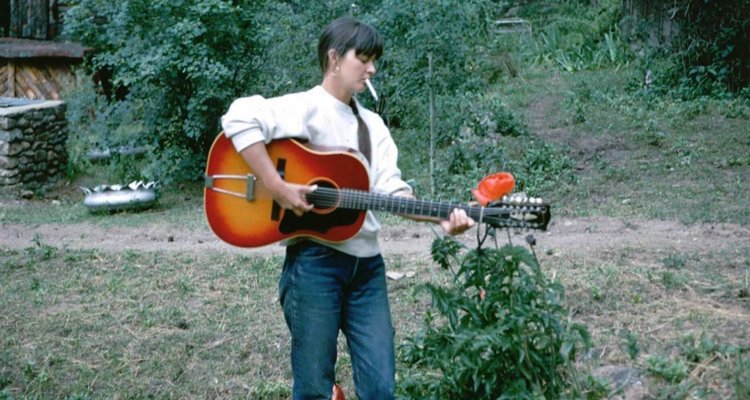Grappling with questions about “folk authenticity” and the relationship between artistry and commercial success, Richard Peete and Robert Yapkowitz’s excellent new documentary, “Karen Dalton: In My Own Time,” excavates and reclaims Dalton’s narrative, shedding light on the ’60s folk singer life, and contextualizing her against the likes of Bob Dylan and Tim Hardin. Foregrounding her personal relationships— with band members and a string of boyfriends — “In My Own Time,” named after her second album, retraces Dalton’s life through a mix of archival footage, interviews, and diary entries read by singer/songwriter Angel Olson. While not the most famous musician to emerge from the Greenwich Village scene, Dalton’s bluesy voice, and complex rearrangements of pre-existing songs, created a cult following, only for her life to be cut short by an intense drug addiction that led to her death in the early ’90s.
The 25 Best Music Documentaries Of The 21st Century So Far
Painfully shy when not playing music, Dalton’s career —which spanned two albums, which have only gotten retrospective commercial success — began in Oklahoma, where she was twice married with two children before her 21st birthday. Wanting to try her hand at musical success, she left behind her life, taking her daughter Abralyn Baird to Greenwich village, performing at the infamous Cafe Wha?, and moving within the same Village circles as Dylan and pre-Mamas and Papas songwriter John Phillips. She eventually moved to Colorado, creating a community of folk artists before becoming addicted to drugs, which only exacerbated her shyness, and unwillingness to compromise in the face of growing commercial success. By the time she was asked to be an opener for Santana, an odd fit no matter what state Dalton was in, the tension between her artistry and the demands of the musical marketplace caused her to recede, effectively shunning the spotlight and never making another album.
READ MORE: The 20 Best Documentaries Of 2020
Yet the music she did create, presented through archival footage of her playing with friends and family in living rooms – the only place she felt comfortable playing – is fantastic. As the writer Ed Ochs describes, her voice sounded like “an old radio” that had just been turned on. She was often compared to Billie Holiday, a comparison which Dalton scoffed at, but her distinct vocal style and musical arrangements nevertheless reinterpreted many of Holiday’s songs; Dylan even called Dalton “my favorite singer” in his autobiography, “Chronicles.”
The Best Documentaries Of The Decade [2010s]
Peete and Yapkowtiz’s film wisely intermix this type of critical context against a trove of archival footage. Essentially tracing her life in chronological order, the film adapts a nomadic structure that mirrored Dalton’s own restless movements. People fall in and out of her orbit – with perhaps the musicians Tim Hardin and Peter Stampfel being some of her only lasting friendships, but even they eventually fade away.
READ MORE: Fall 2021 Movie Preview: 60+ Must-See Films
What is painfully clear is that Dalton refused to be commodified — unwilling to court listeners or producers. In doing so, she may have developed a cult following predicated on her truly “authentic” voice, but she also suffered financially and personally. It’s all the more tender, then, that her music has been essentially rediscovered, propped up by new-folk artists Olson, Joanna Newsom, and Sharon Van Etten. Nick Cave even shows up to expound upon his growing admiration for the artist.
While the film has noticeable gaps about Dalton’s life, especially as her drug addiction spirals throughout the ’80s, “In My Own Time” is nevertheless a profound document of recovery. Just as Dalton worked as a conservationist – reinterpreting old folk songs through her distinctive musical arrangements —the film likewise acts as a primer that resists the self-mythologizing that Dalton pushed back against. By the end of the film, the directors reveal that a fire has destroyed most of Dalton’s writing, the diary, and lyrics that she was often too shy to share publicly. As such, the film is almost all that remains of her unproduced work, itself working as a type of archive. Peete and Yapkowitz have created a tender portrait of the underappreciated singer, humanizing her experience within the recording industry and showcasing a one-of-a-kind musician who is only just beginning to get the recognition she deserved. [A-]

